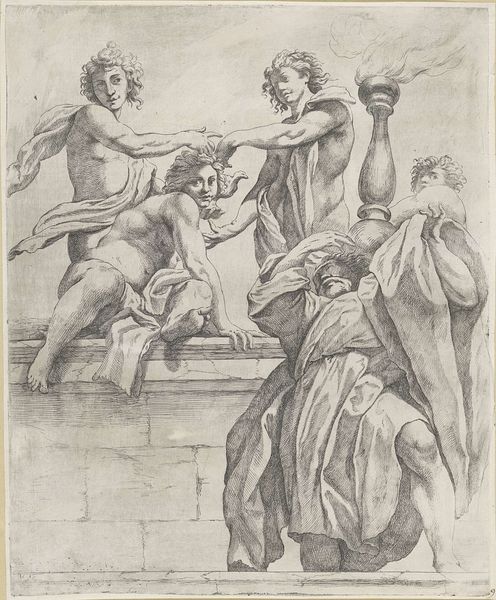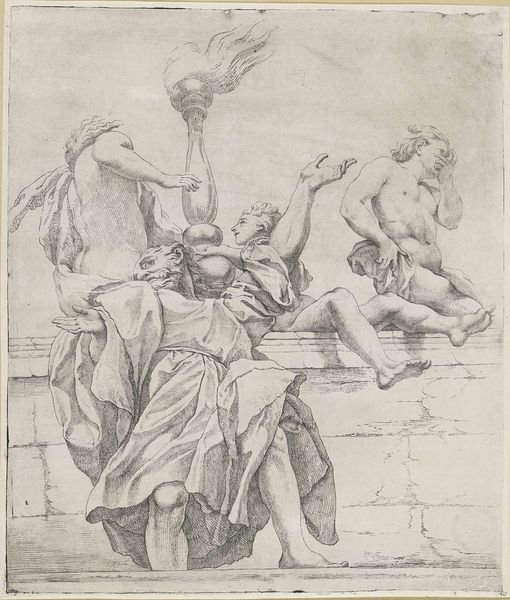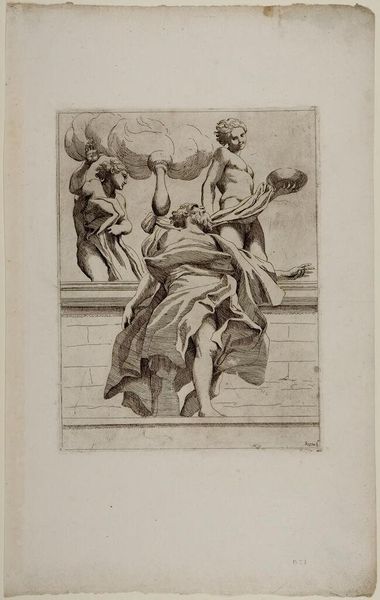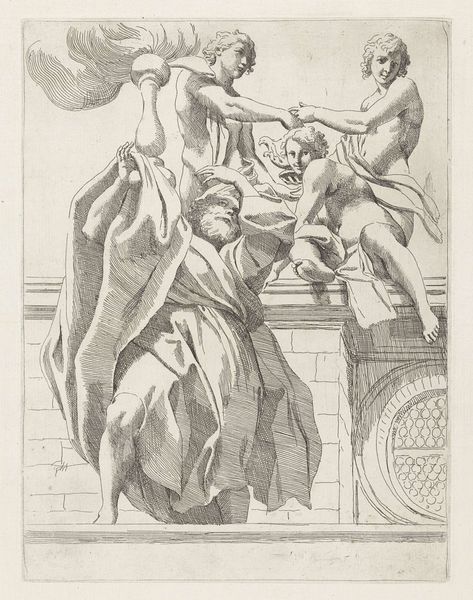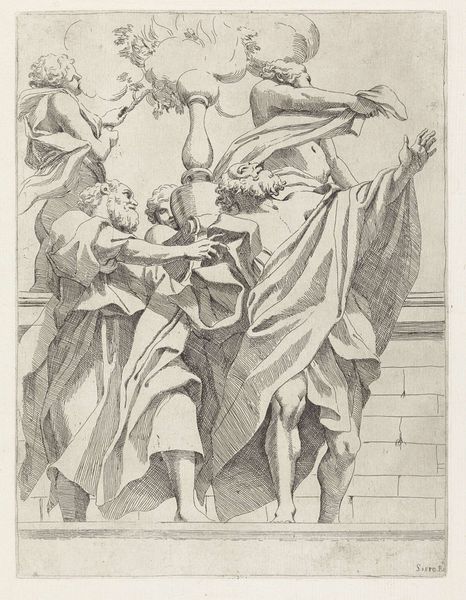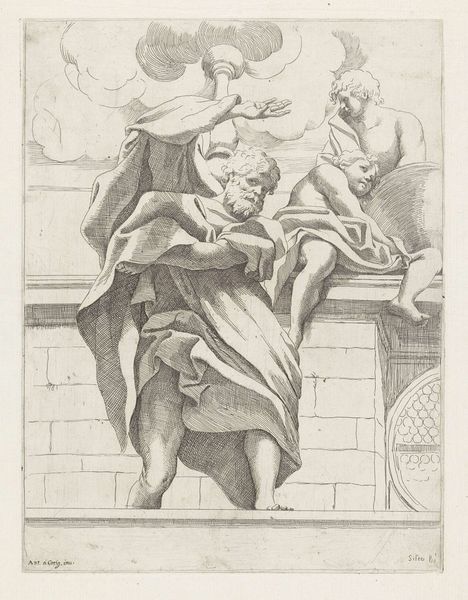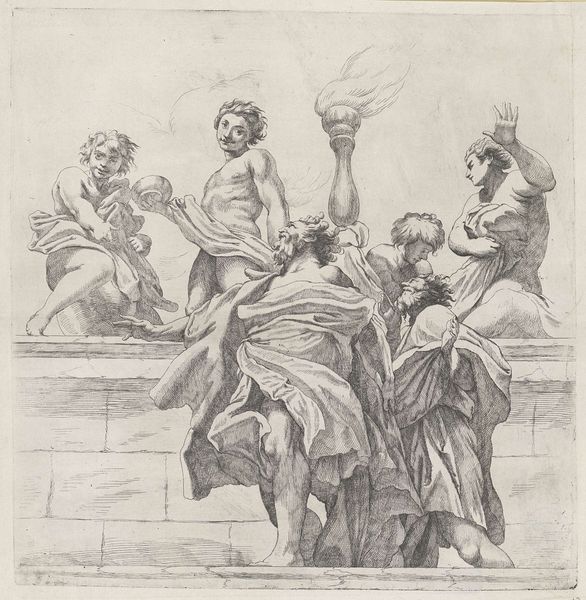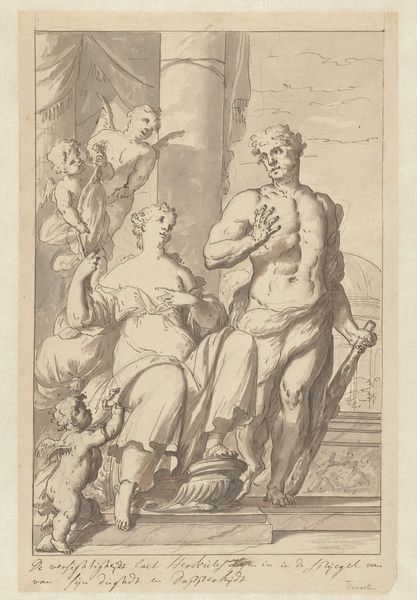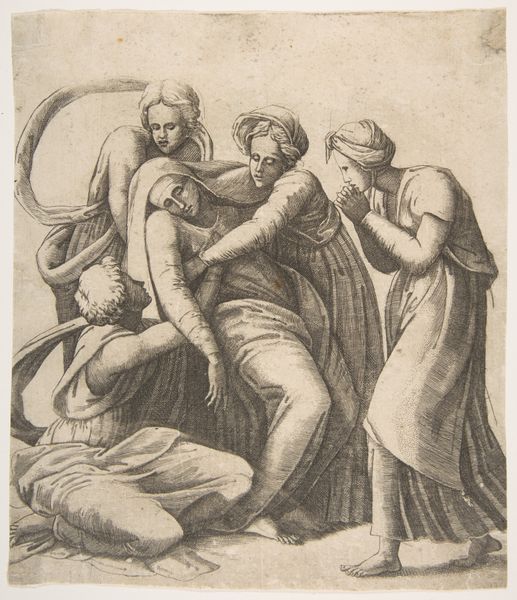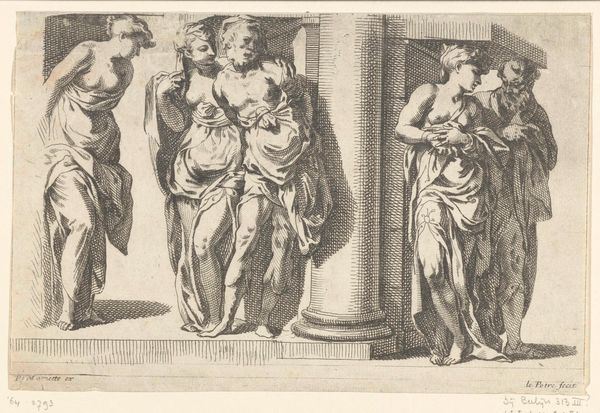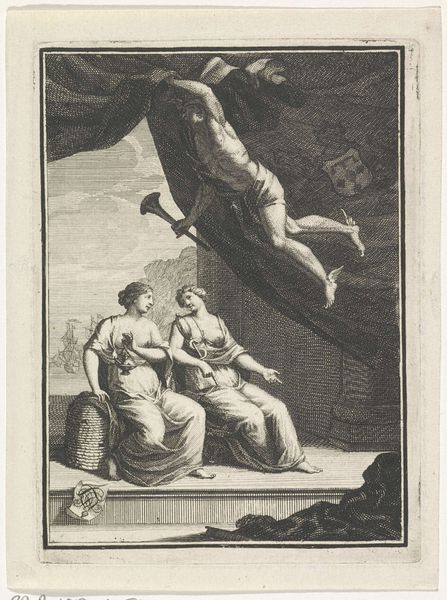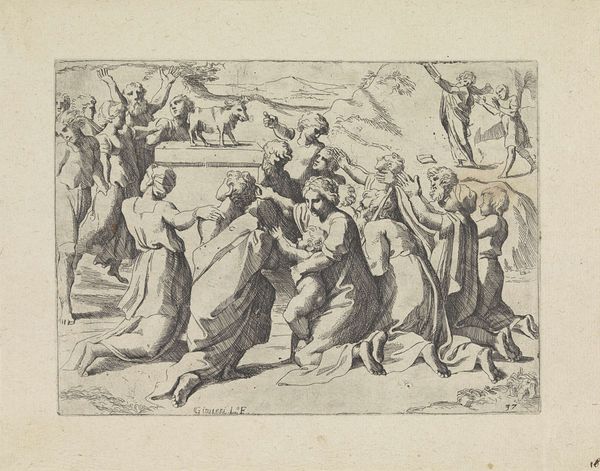
drawing, engraving
#
drawing
#
comic strip sketch
#
imaginative character sketch
#
light pencil work
#
allegory
#
baroque
#
pencil sketch
#
cartoon sketch
#
figuration
#
personal sketchbook
#
line
#
sketchbook drawing
#
pencil work
#
history-painting
#
storyboard and sketchbook work
#
sketchbook art
#
engraving
Dimensions: height 274 mm, width 209 mm
Copyright: Rijks Museum: Open Domain
Editor: This drawing, "Prophet with Two Angels" by Sisto Badalocchio, made sometime between 1591 and 1647, looks like a preliminary sketch with these figures emerging from the stone or the page itself. It feels very dynamic, almost like a scene from a play. What do you see in this piece? Curator: Well, immediately, I’m drawn to the lines. Look at the clear etching; the cross-hatching creates depth with very little shading. Considering its period, what do you think about the materials used, and their accessibility for a Baroque artist in that time? Editor: I suppose engravings and drawings were cheaper than oil paints and canvases. It’s interesting that this work democratizes the scene portrayed because of its medium. Curator: Precisely. Now think about the 'means of production.' Engravings could be reproduced and distributed more widely than a unique painting. How might that impact the work’s message, compared to, say, a single, monumental oil painting in a Roman palazzo? Editor: Ah, so this could reach a wider audience, perhaps spreading allegorical or historical narratives to people beyond the elite. The act of reproducing and circulating changes the artwork's social function! Curator: Exactly. Consider, too, the 'labor' involved – not just Badalocchio's hand, but the artisans reproducing the work, and the distribution networks. How do all these contribute to the meaning of the piece? Editor: This gives a whole new meaning to 'production', I will keep that in mind in the future when analysing other drawings or engravings. Curator: Indeed. Seeing the work through its material conditions and the process involved offers powerful new insights.
Comments
No comments
Be the first to comment and join the conversation on the ultimate creative platform.
